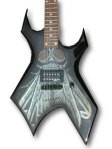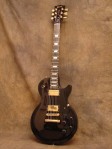Guitar CARE
The GUITAR SOCIETY
courtesy-wikihow-for educational purpose onlySteps
-
1
Your guitar should be treated like a guitar so treat it how you think it should be treated. But never ever lay it down on the ground when you don’t play it or do maintenance on it. The best place for your guitar to be is in a case, in a gig bag, on a wall hanger or on a floor stand.But in the monsoons…..out side

-
2
Every now and then, pick it up, check for damage and polish it.
- If you have an electric guitar, try loosening the strings a bit so you can remove the dust that most likely has gathered around the pickups.
- If you have an acoustic, loosen the strings and remove the dust by the bridge.
- You don’t need to loosen them much, just enough to get a cloth underneath. *Prod the hardware to see if it’s loose, and if it is, see if there’s a screw you can tighten.
- If you have a strat-type of guitar, check the nut on the socket. It is probably loose, so tighten it, either just by your fingers (but it’s gonna get loose again real soon) or with some pliers (don’t tighten to hard, or you are gonna damage the nut).
-
3
If you’re going to ever take it out of the house, then head down to your local guitar store and check prices for padded gigbags or even better, cases. Guitar cases have a hard shell that protect your instrument from damage.
 Changing Strings
Changing Strings
-
1
Restringing guitars is not as hard as it may seem. It’s actually really easy, when you know how. The thing to remember is: One string at a time
-
2
Do not take off all strings before you put on new – the neck needs to have the tension provided by strings put on and in tune (almost in tune, at least). Start with the low E (6th string), mainly because it’s at the top.
- You might find it easier to start with high E (1st string), but it’s mainly all the same
-
3
A real nice thing to possess is a string winder. It makes the process of unwinding a string and winding the new one all that much easier. It’s not a required tool however, but most certainly a thing I would recommend that you go out and buy, right now. First, you unwind the string at the machine head. Keep on turning the tuner until the string is so loose you can wind off the string with your hands and removing it from the machine. Then, you go down to the bridge and notice how the string is fastened there.
-
4
Make sure you have quite a few wraps around the peg for if not, the string will go out of tune more frequently and easily.
-
5
There are quite a lot of different ways that the guitar manufacturers use at the bridge. However, on most electrics it’s quite simple and you don’t need a tool to loosen the strings. Except if you are so lucky that you have a Floyd Rose system on it, then the strings are fastened by tightening the string into a clamp. This you need the specific tool for, but it should have been provided when you bought the guitar.
 Customization
Customization
-
1
Go to your local guitar store, or look on the internet for spare parts. Replacing scratchplate or volume knobs are things almost everyone could do with their guitar.
-
2
If you are a talented artist, you can try to customize your guitar by painting it with some paint that will stick on, or you can put on some stickers. Basically, to customize your guitar, use your imagination. Almost everything can be done with it. Do not try to reshape it, neither the body nor the neck nor the headstock, as this can mess up the sound coming from it.
 EditTips
EditTips
- Be extra careful when playing it that you don’t scratch it. Look into a guitar with a pick guard.
NEVER leave your instrument(s) in a hot car, especially on the back windscreen ledge in direct sunlight in the summer. Even inside a case the high temperature can be VERY destructive. So, even if you are tired after a hard gig, properly unload your gear from your transportation! In general, keep your instrument away from excessive temperatures, very strong magnetic fields (it can effect strings and pick-ups), moisture and abrasive situations. Also make sure that guitar straps and strap pins are secure and properly maintained (reducing the incidence of the instrument being dropped and possibly damaged). If possible use ‘stage cords’ if you are standing up and moving around while playing. (A stage cord is coiled like a long spring and greatly reduces fatigue on the jack plugs. A ‘studio cord’ is not coiled. Also, FM radio Guitar to Amp devices are available to entirely eliminate the cord of any type
 EditWarnings
EditWarnings
- Don’t spray it with any chemicals to clean it. They might discolor it.
- Dont keep your guitar in the case in the monsoons…it will warp
- Dont wipe your strings wit wet cloth,it will rust
- Dont use wet cloth to wipe the box,it will give a different sound
- Dont keep the guitar sleeping on the floor,it will let annoying sounds
- The opinions, views, and ideas expressed , do not necessarily reflect or represent the views of the Guitar Society. Send all thoughts, comments, disagreements, and rants to guitarsoc@gmail.com All e-mails will be considered for publication.


















